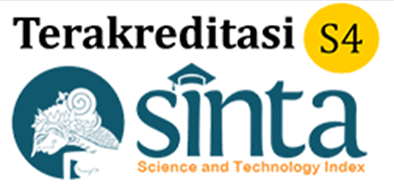Analisis Pengembangan Sumber Daya Manusia Pada PT. Perusahaan Listrik Negara (Persero) UPT Kota Bengkulu
Abstract
Human resource development is applied by every company and government agency as a form of effort from the company to measure the level of ability and expertise possessed by its resources so that its resources have a good level of quality and performance. The purpose of this research is to find out how the application of human resource development so that it will produce high-quality employees, as well as the inhibiting factors. This research uses qualitative research methods. By collecting 4 informants as sources. This research data collection technique is based on data reduction, data presentation, and data conclusions collected based on observations, interviews, and documentation conducted in the field. Based on the results of the study that human resource development as measured by motivation, education and training, career needs, fair treatment in a career, promotion, motivation, and mutation has a big role in improving the quality of human resources owned by the company. The inhibiting factor is that there are still many employees who are lazy to carry out training and unwanted job placements because they are not in accordance with their abilities. While the supporting factors are that the company has provided a special institution that is used to accommodate problems that occur, both external and internal problems, such as the education and training unit (UDIKLAT), P2K3 meetings, management derivative meetings (RTM), quarterly meetings, LKS Bipartik, and tripartite.
References
Agustini Fauzia. 2008. Buku Manajemen Sumber Daya Manusia Medan. ed. Desi Mandasari. Jakarta Selatan: Penerbit Salemba Empat.
Sari, E. (2009). Pengembangan Sumber Daya Manusia: Pedoman Meningkatkan Kompetensi Pegawai Secara Tepat. In Jayabaya University Press.
Manusia, M. S. D., & Marnis, P. (2014). Manajemen Sumber Daya Manusia. In Ziifatama Publisher (Vol. 1, Issue 9).
Sugiyono, D. P. (2014). Memahami Penelitian Kualitatif.
Rodiyah, I. (2020). Buku Ajar Manajemen Sumber Daya Manusia Sektor Publik (Msdm-Sp). In Buku Ajar Manajemen Sumber Daya Manusia Sektor Publik (Msdm-Sp) (Vol. 4, Issue 1). https://doi.org/10.21070/2020/978-623-6833-70-4.
Bukit, Benjamin, Tasman Malusa, and Abdul Rahmat. 2017. Zahir Publishing Pengembangan Sumber Daya Manusia.
Indonesia, PRESIDEN REPUBLIK, and Menimbang. 2003. “Undang-Undang Republik Indonesia No.13 Tahun 2003 Tentang Ketenagakerjaan.” Undang-undang No.13 Tahun 2003 4: 147–73.
Manusia, Manajemen Sumber Daya, and Priyono Marnis. 2014. 1 ZIifatama Publisher Manajemen Sumber Daya Manusia. https://www.cambridge.org/core/product/identifier/CBO9781107415324A009/type/book_part.
Nisak, Khoirun, Asmie Poniwatie, and Indah Noviandari. 2021. “Pengaruh Perencanaan, Pemberdayaan Dan Pengembangan Sumber Daya Manusia Terhadap Kinerja Karyawan Divisi LIS II Di PT. Maspion II Sidoarjo.” EkoBis: Jurnal Ekonomi & Bisnis 1(2): 47–54.
Pemerintah Indonesia. 2007. “Undang-Undang Republik Indonesia No. 40 Tentang Perseroan Terbatas.” Ятыатат вы12у(235): 245. http://digilib.unila.ac.id/4949/15/BAB II.pdf.
PT PLN (Persero). 2021. “Keputusan Direksi PLN No.501.KDIR2012.”
Rodiyah, Isnaini. 2020. 4 Buku Ajar Manajemen Sumber Daya Manusia Sektor Publik (Msdm-Sp) Buku Ajar Manajemen Sumber Daya Manusia Sektor Publik (Msdm-Sp).
Undang-Undang Dasar 1945. 1945. “Undang-Undang Dasar 1945 Pasal 27 Ayat (2).” (1): 1–49.
Wijaya, M Jimmy Hadi. 2014. “1. MSDM.Pdf.”
Yanti, Linda trisna. 2019. “Pengaruh Pengembangan Sumber Daya Manusia Terhadap Kinerja Aparatur Sipil Negara (ASN) Pada Kantor Kecamatan Maiwa Kabupaten Enrekang.” Αγαη 8(5): 55.
Copyright (c) 2024 Jurnal Manajemen dan Ilmu Administrasi Publik (JMIAP)

This work is licensed under a Creative Commons Attribution 4.0 International License.













